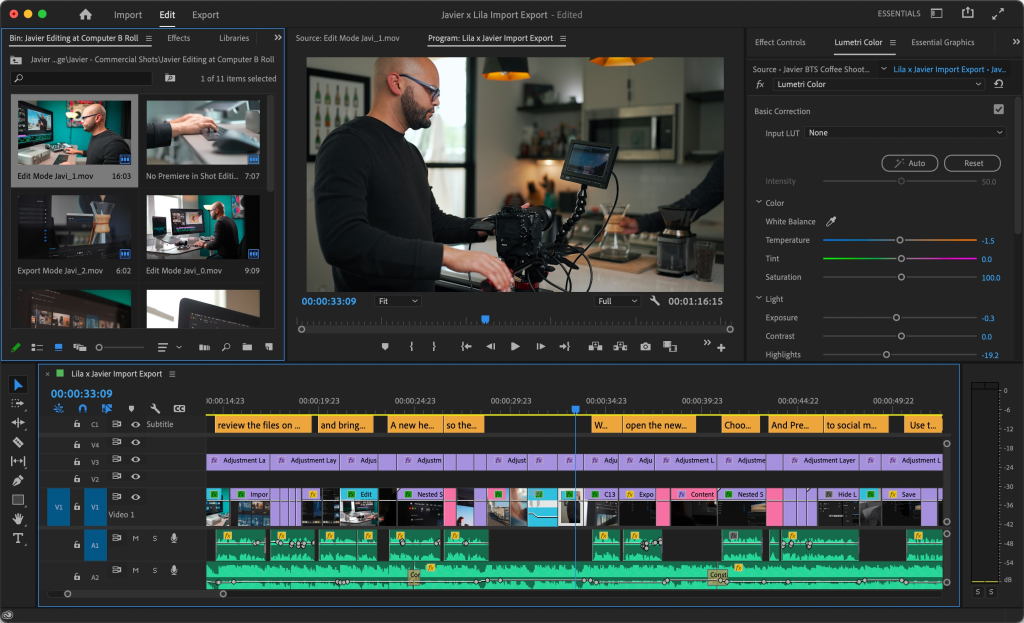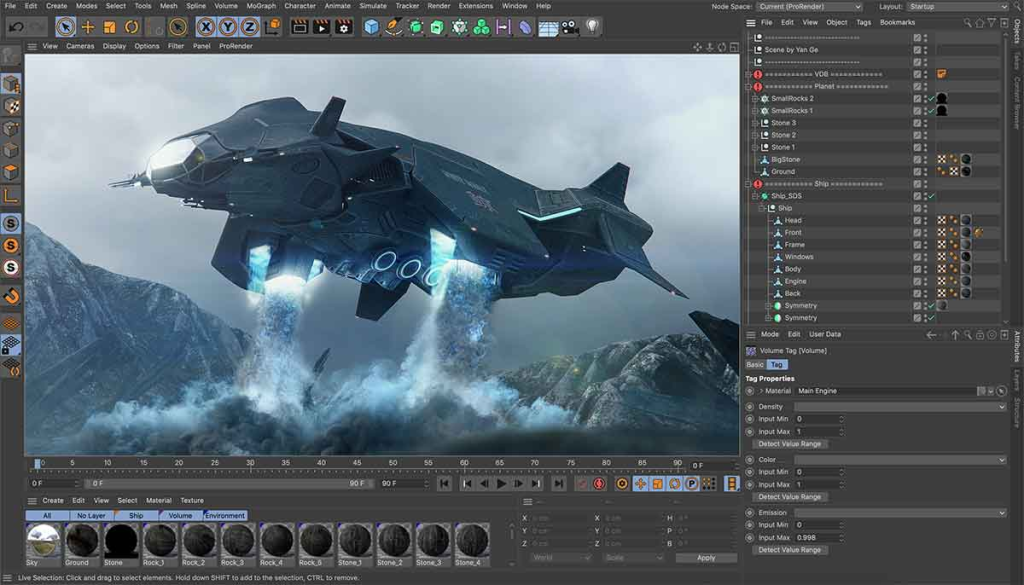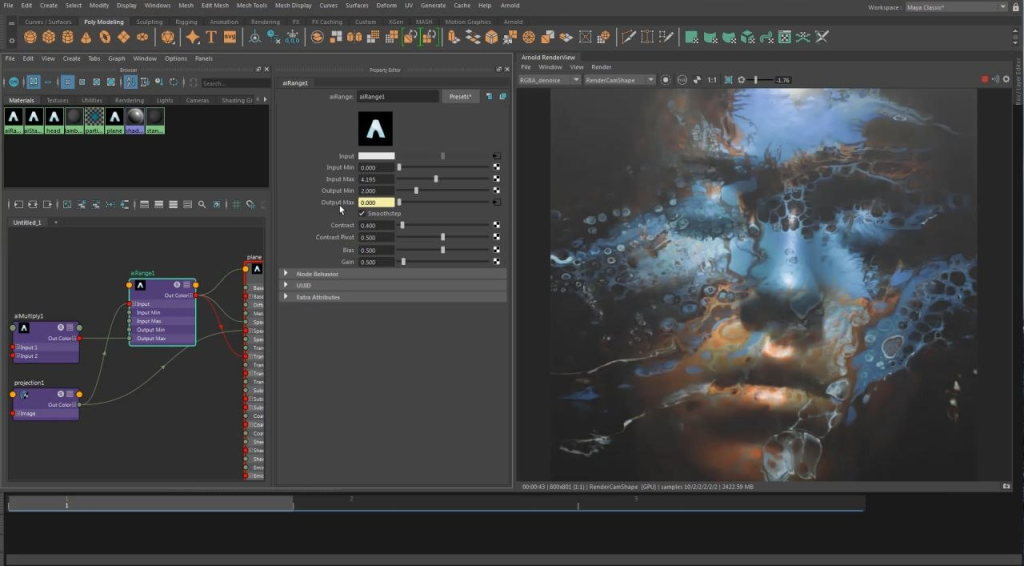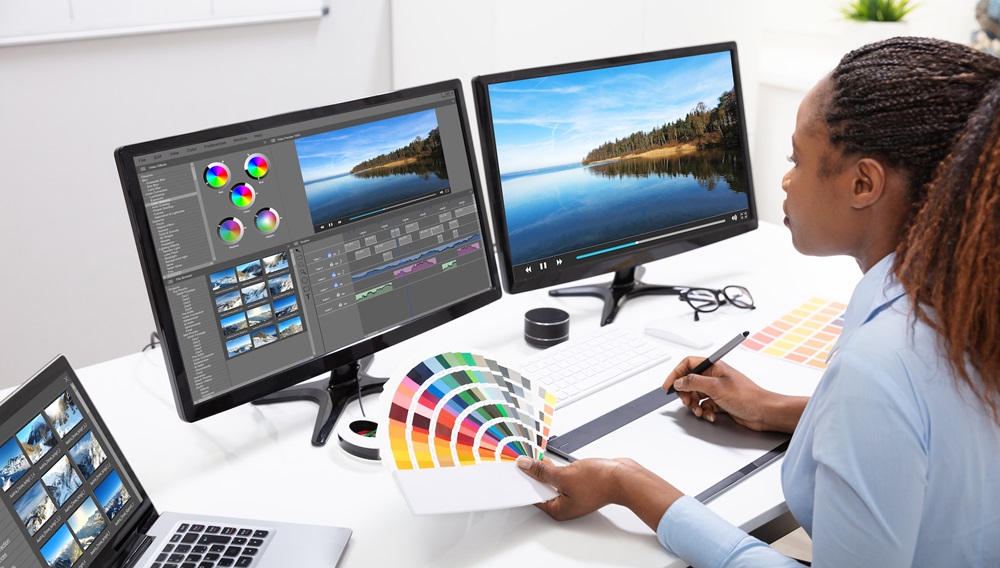Welcome to the cutting-edge world of Visual Effects (VFX) used in the movie industry, where technology and creativity converge to craft breathtaking cinematic experiences. This detailed exploration dives into the sophisticated software applications, the roles of VFX professionals, and the industry standards that define the magic of modern filmmaking.
The Software Powering Modern VFX
Adobe Premiere Pro

Adobe Premiere Pro is a staple in the film post-production process, renowned for its robust editing tools that allow seamless integration of visual effects and general video editing. Premiere Pro is favored for its versatility in handling straightforward cut sequences to complex projects involving multiple tracks and effects.
DaVinci Resolve

DaVinci Resolve offers a comprehensive video editing suite for movie studios with advanced color correction and audio post-production capabilities. Its node-based color grading system is particularly beneficial for detailed color work on VFX-heavy sequences, making it a preferred choice for colorists in the VFX industry.
Cinema4D and Blender

Cinema4D is a powerful tool renowned for creating advanced 3D graphics. It is highly praised for its ease of use and deep integration with motion graphics, which are essential for producing intricate title sequences and simulated environments. Following Cinema4D, Blender—an open-source 3D modeling, animation, and rendering suite—has also gained significant traction. Known for its robust features that rival those of costly commercial software, Blender offers no-cost access and is celebrated for its versatility and community-driven enhancements.
Autodesk Maya

Autodesk Maya is arguably the most crucial piece of software in the creation of high-end VFX. Widely used for 3D modeling, animation, and rendering, Maya offers extensive tools that help artists bring lifelike animations and environments to the big screen. It is particularly renowned for its sophisticated animation and rigging tools, making it indispensable for character animation.
Also Read: Intro to VFX: Creating Stunning Visual Effects
Inside Industrial Light & Magic (ILM)

Industrial Light & Magic (ILM), a division of Lucasfilm, is one of the leading VFX companies globally. They often use a combination of industry-standard and proprietary software tailored to the unique demands of their projects. While Maya is frequently employed for its animation capabilities, ILM also utilizes proprietary software like Zeno, which is their in-house application designed for complex visual effects. They are known for pushing technological boundaries, often developing custom solutions and algorithms to handle unique challenges presented by blockbuster movies.
The Role of VFX Professionals

In the world of VFX, professionals range from artists and animators to technical directors and compositors. Each role is defined by a specific part of the VFX pipeline:
- VFX Artists create the visual effects based on the creative vision and technical requirements of the project.
- Compositors bring together all elements of visual effects, ensuring that they blend seamlessly with the live-action shots.
- Technical Directors often troubleshoot and write custom scripts or tools to enhance the capability of VFX software or to solve specific problems that arise during production.
Challenges and Innovations in VFX
While the VFX industry is full of excitement and creativity, it also comes with its challenges, such as the high demand for realism and the rapid pace of technological changes. To keep up, professionals must continuously learn and adapt, mastering new tools and techniques as they emerge.
Closing Thoughts
The world of VFX in movies is a dynamic and evolving field that combines artistic vision with technological expertise. As software becomes more sophisticated and the demands of audiences grow, the industry is pushed towards constant innovation. Understanding the tools and roles within VFX not only provides insights into how your favorite movie magic is made but also underscores the blend of art and science that makes modern cinema possible.











